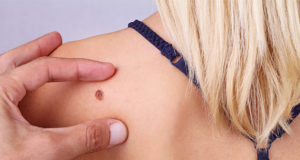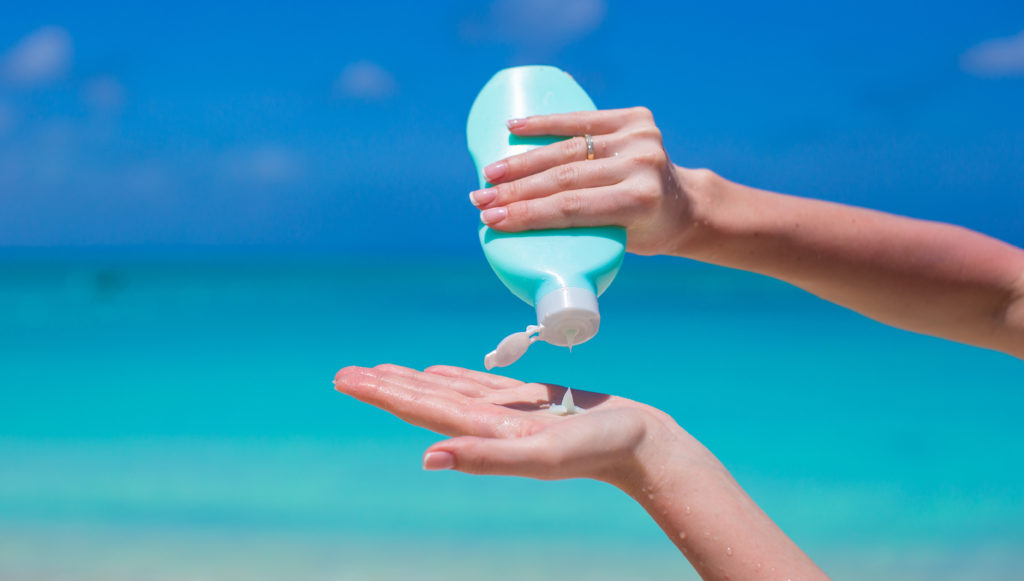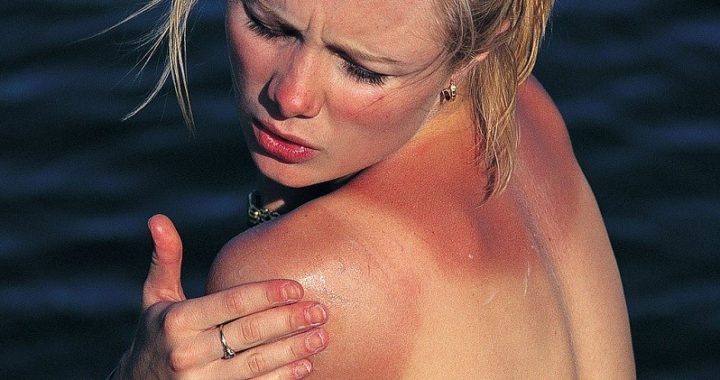During the summer months, everyone is heading outdoors, going to the beach, and doing many other activities that expose their skin to the rays of the sun. If you do not take precautions to protect your skin from the sun, it can lead to serious skin damage.
If you do not use a good sunscreen, you could experience sunburn, wrinkling and even potentially develop Melanoma. Here is some valuable information that you should know about melanoma and how you can protect your skin while enjoying your time outdoors.
Melanoma:
 You probably have heard of melanoma but might not fully grasp how dangerous this condition is. Melanoma is a form of skin cancer that, if not quickly treated, can lead to death. This form of cancer spreads alarmingly fast and though less common than other forms of skin cancer, it’s on the rise!
You probably have heard of melanoma but might not fully grasp how dangerous this condition is. Melanoma is a form of skin cancer that, if not quickly treated, can lead to death. This form of cancer spreads alarmingly fast and though less common than other forms of skin cancer, it’s on the rise!
Melanoma is caused by overexposure to the sun and/or ultraviolet radiation. People with fair complexions such as redheads and blonds, those with blue or green eyes, are at the highest risk of developing melanoma. Although the risk will increase as you age, it can also affect younger, healthier people.
The Signs:
Melanoma can first appear as a mole that will slowly increase over time. Everyone has a mole or two or a birthmark, but if you have discovered a new spot, and have spent time outdoors without skin protection, you should set up an appointment with your doctor as soon as possible!
The Dangers Of Sun Exposure:
The sun produces ultraviolet rays (UV) as well as UVA, UVB, and UVC. These rays are broken down as follows:
UVA:
95% of ultraviolet rays that reach the earth’s surface are from UVA. It penetrates the second layer of skin, causes damage, wrinkles, and premature aging. UVA is used in tanning beds as well – So Beware!
UVB:
These ultraviolet rays affect the top layer of your skin. It causes sunburns and is directly linked to skin cancer. It can burn unprotected skin in less than 15 minutes and damages your skin’s DNA.
UVC:
This radiation comes from a short wave C range and cannot penetrate dead skin. But it can damage superficial tissues of the eye. Though this can cause a great deal of discomfort, it is normally gone in a short period of time.
The Highest Risks From Ultraviolet Rays:
There is an increase in exposure during the summer months, at higher altitudes, and during the sun’s highest point during the day. The sun’s reflection off sand, water, and snow can affect your skin very quickly. Any activities on the water such as swimming, surfing or sailing will reflect these rays off the water and can harm unprotected skin. Many people think they are safe from skin damage from UV during the winter months. Actually, if you ski during the winter months, you are at high risk if your skin is not properly protected. The reflection of sun rays off the snow is very intense. You can limit your exposure by covering exposed areas with sunscreen, hats, sunglasses, etc.
Sunscreen SPF Levels:
You might think the higher a sunscreen’s SPF is, the safer you will be. Unfortunately, that’s just not the case. SPF15 blocks approximately 94% of UVB rays, SPF 30 blocks 97%, and SPF 45 blocks approximately 98%. There are no sunscreens that will protect your skin 100%.
When To Apply Your Sunscreen:
 It is highly recommended that you apply a water-resistant lotion approximately 30-minutes before going outdoors. You should reapply the lotion at least every 2-hours and directly after sweating or swimming. If you come out of the water and dry off, immediately apply another layer of sunscreen.
It is highly recommended that you apply a water-resistant lotion approximately 30-minutes before going outdoors. You should reapply the lotion at least every 2-hours and directly after sweating or swimming. If you come out of the water and dry off, immediately apply another layer of sunscreen.
Keep in mind, only one application of sunscreen will not protect you all day long. You should apply a new layer throughout the course of the day. If you work outdoors, wear protective garments and hats.
Carefully apply a lotion around your eye area, making sure you do not get it in your eyes. Wear sunglasses to protect your eye tissue from UVC.
Sunscreen – How To Apply It Properly:
Sunscreen comes in three different applications from sprays, to sticks, or lotions. Apply a thick layer to your skin and if using a lotion make sure you shake it well before applying.
Make sure you apply enough sunscreen to cover all areas of your body that will be exposed to the sun. This includes your back, legs, neck, shoulders, arms, and ears.
In Conclusion:
Outside of wrinkles and tougher appearing skin, Melanoma is a serious affect from the rays of the sun. This time of year is a great time to spend outdoors with family and friends. Make sure your skin gets the protection it deserves and enjoy the beach and summertime!
If you experience a serious sunburn visit our La Jolla urgent care for immediate treatment!
7634 Girard Ave Ste A • La Jolla, CA 92037
858-412-6066

